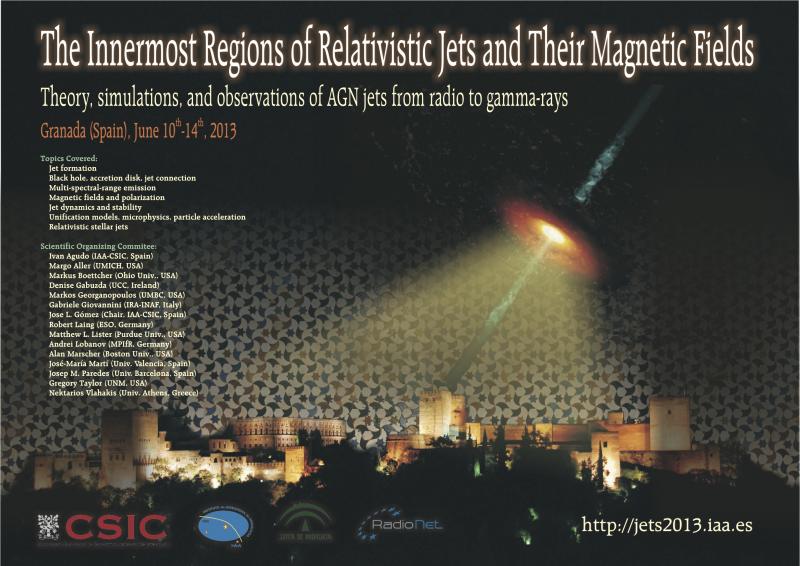The Innermost Regions of Relativistic Jets and Their Magnetic Fields. Granada (Spain). June 10th-14th, 2013.
Chen, Xuhui
Magnetic field amplification and blazar flares
Author list: Xuhui Chen, Ritaban Chatterjee, Giovanni Fossati, Martin Pohl
Recent multiwavelength observation of PKS0208-512 by SMARTS, Fermi, and Swift revealed that gamma-ray and optical light curves of this FSRQ are highly correlated, but with an exception of one large optical flare having no corresponding gamma-ray activity or even detection (Chatterjee et al. 2012). On the other hand, recent advances in SNRs observations and plasma simulations both reveal that magnetic field downstream of astrophysical shocks can be largely amplified beyond simple shock compression. These amplifications, along with their associated particle acceleration, can be expected to explain the blazar flares, including the peculiar flare of PKS0208-512. Using our time dependent multizone blazar emission code, we evaluate several scenarios that may represent such phenomena. This code combines Monte Carlo method that tracks the radiative processes including Inverse Compton scattering, and Fokker-Planck equation that follows the cooling and acceleration of particles. It is a comprehensive time dependent code that fully take into account the light travel time effects (LTTEs). In this study, both the changes of the magnetic field and acceleration efficiency are explored as the cause of blazar flares. Under these assumption, Synchrotron Self-Compton (SSC) and External Compton (EC) models produce distinct features that favor the EC model. The optical flares with/without gamma-ray counterparts can be explained by different allocations of energy between the magnetization and particle acceleration, which in turn can be affected by the relative orientation between the magnetic field and the shock front. We will compare the details of the observation and simulation, and highlight what implications this study has on our understanding of relativistic jets.




